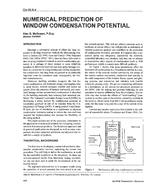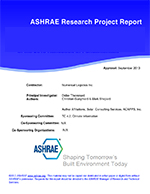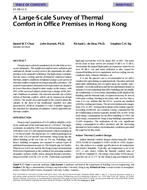For many years,designers have longed for the ability to make fair and accurate performance comparisons between conventional and radiant-based space conditioning systems. All of the past attempts at fulfilling this desired goal have suffered from a lack of sophistication and/or a lack of visibility and availability. With the release of new energy simulation software (EnergyPlus) by the U.S.Department of Energy in April 2001, architects and engineers were finally able to make system performance comparisons using a fundamentally sound tool that will be widely available to the public. In addition to the ability to model configurable forced air systems, the initial release of the new program also included models for low-temperature radiant heating and cooling systems (electric and hydronic), high-temperature radiant heating systems, thermal comfort evaluations using three established comfort algorithms, and the possibility to investigate “hybrid†systems. This paper discusses the capabilities of the new program with respect to radiant systems as well as provides information on the heat balance method itself and the new radiant model usage, development, and limitations.
Units: Dual
Citation: Symposium, ASHRAE Transactions, vol. 108, pt. 2
Product Details
- Published:
- 2002
- Number of Pages:
- 10
- File Size:
- 1 file , 600 KB
- Product Code(s):
- D-8866


